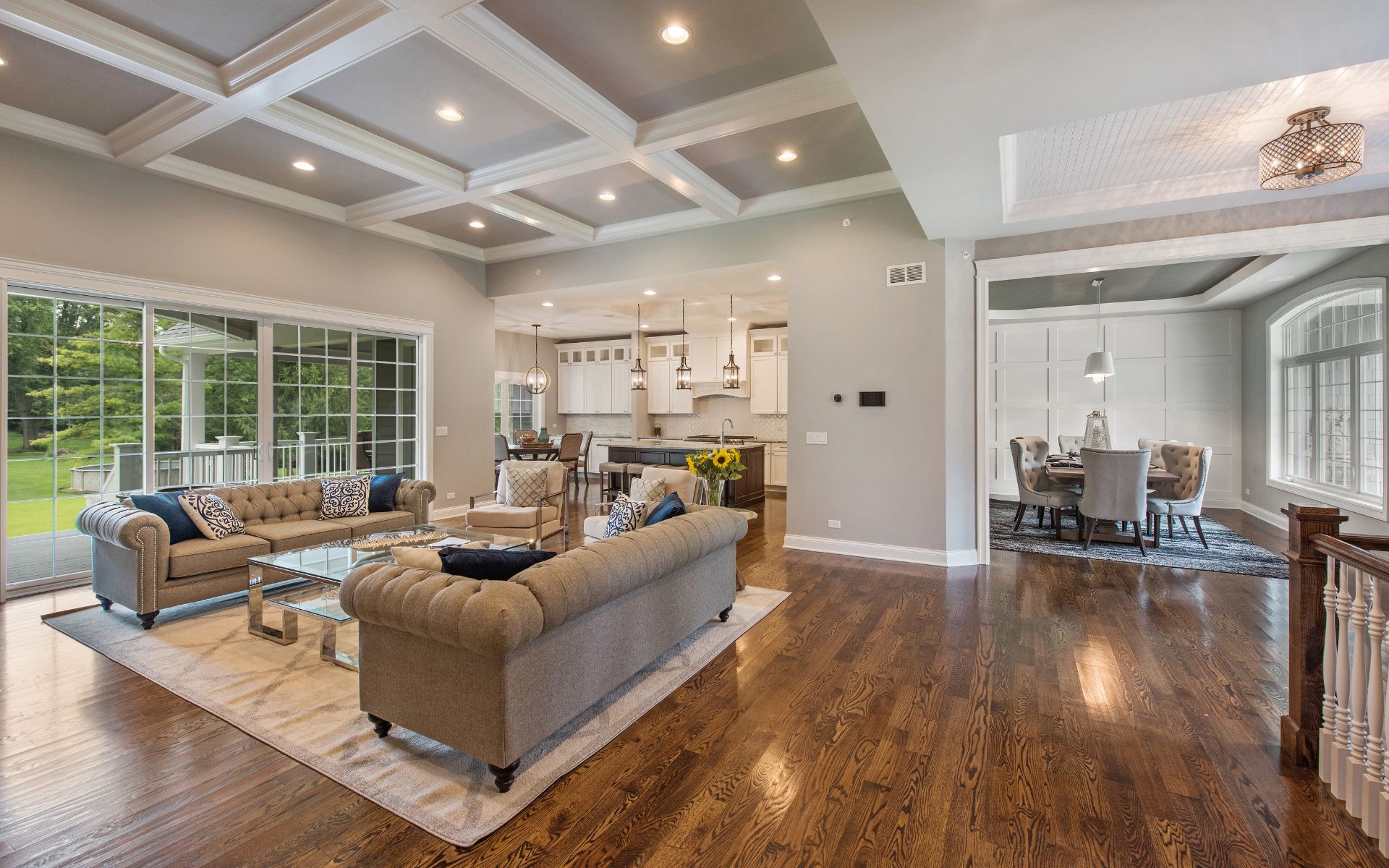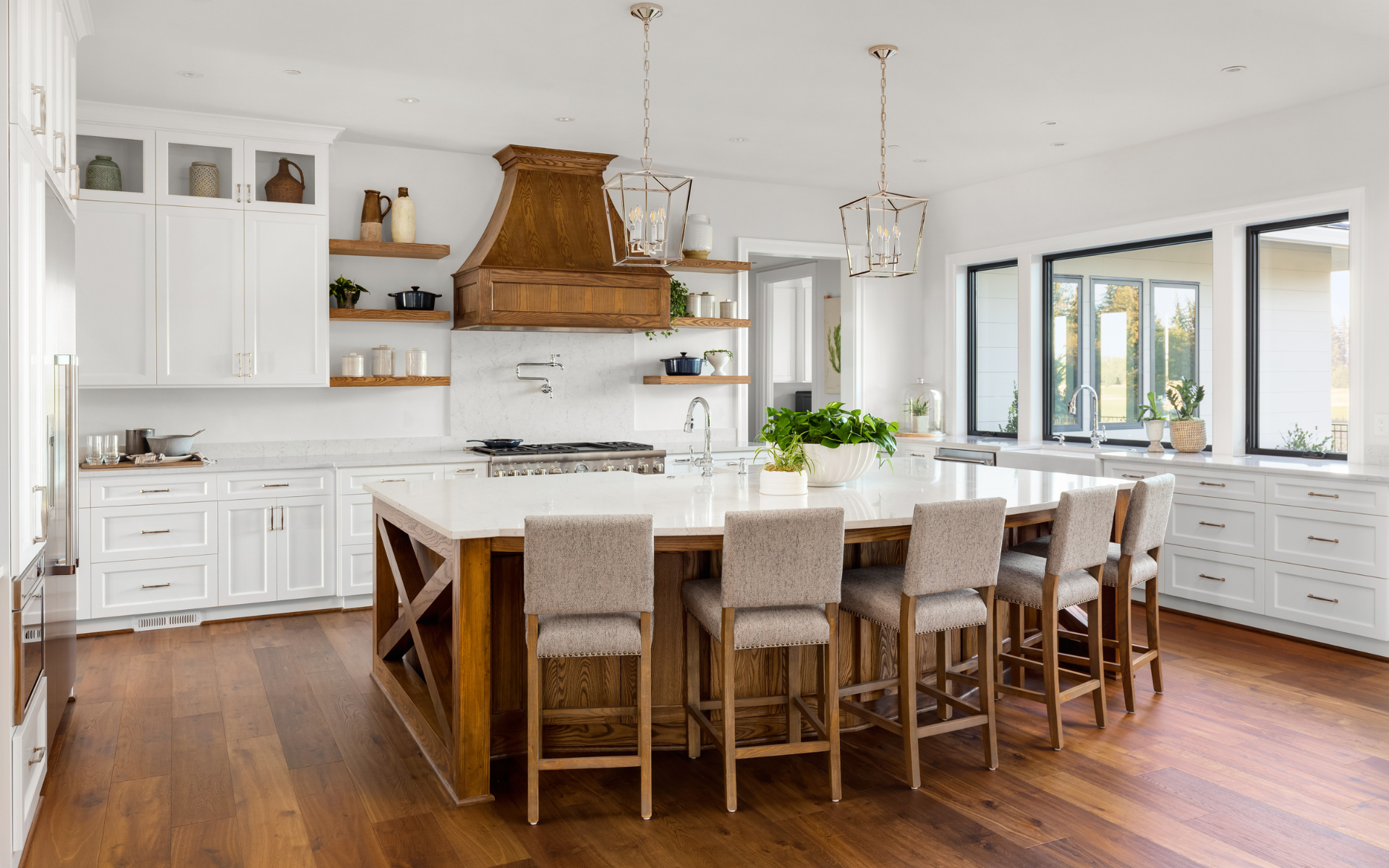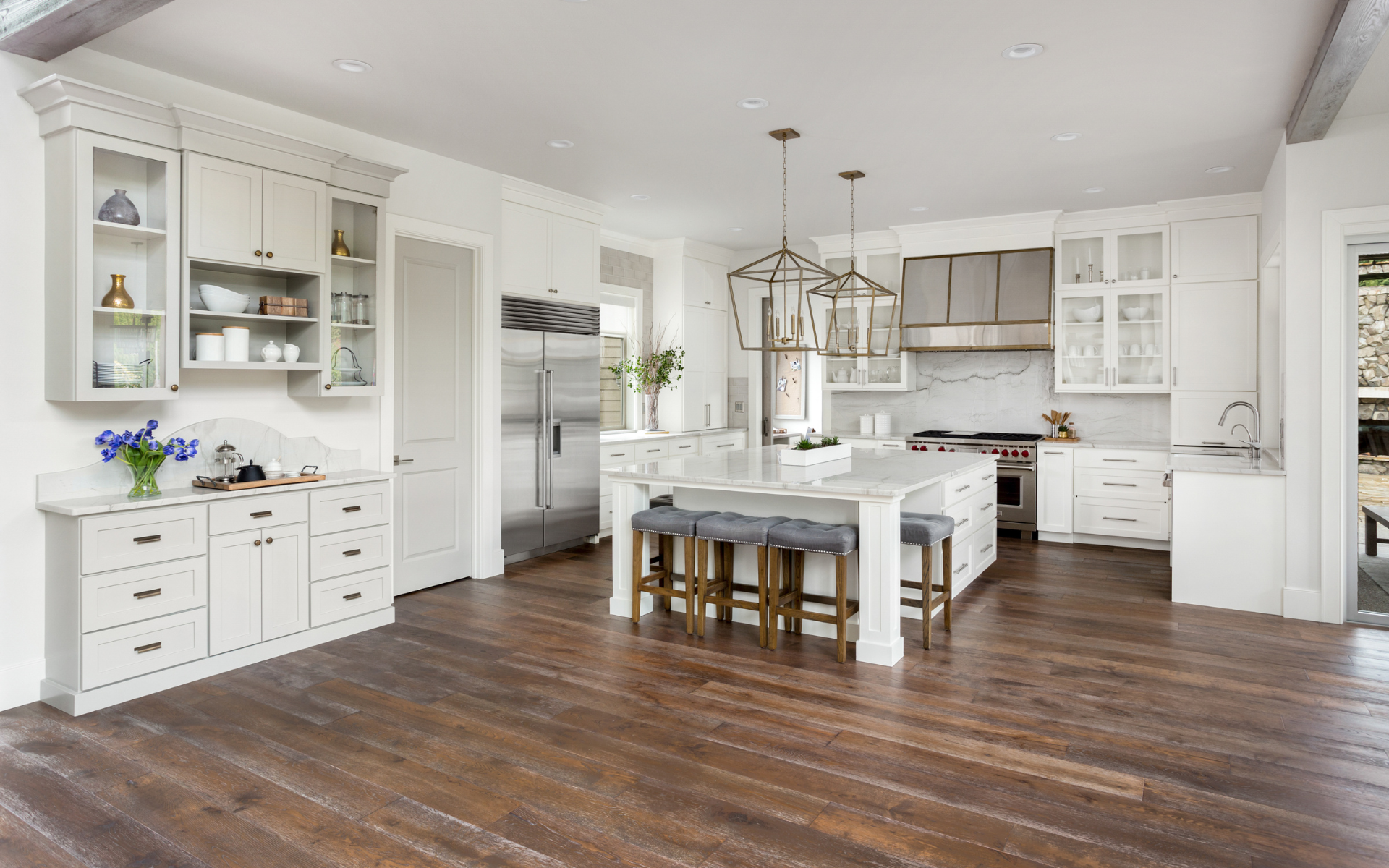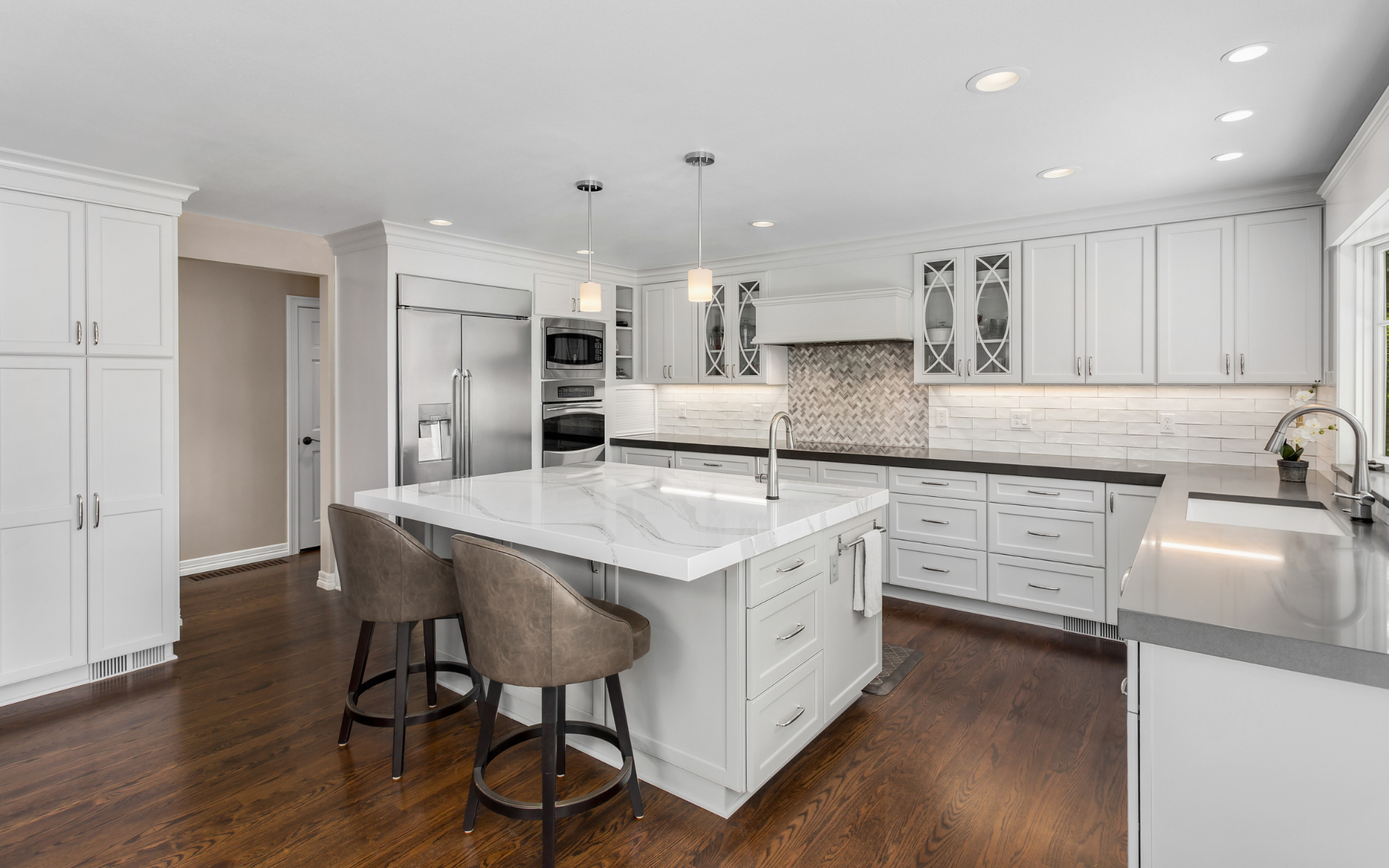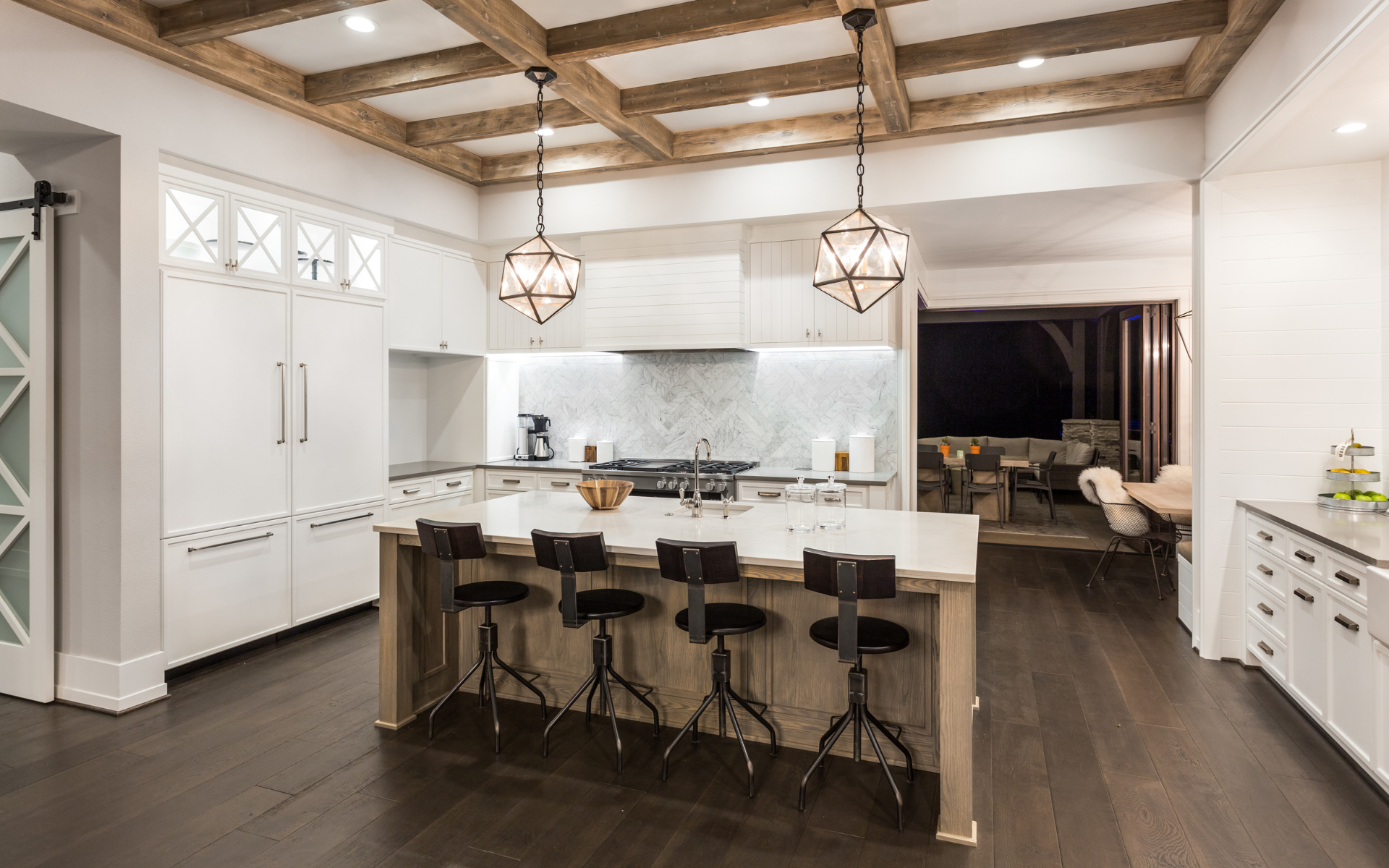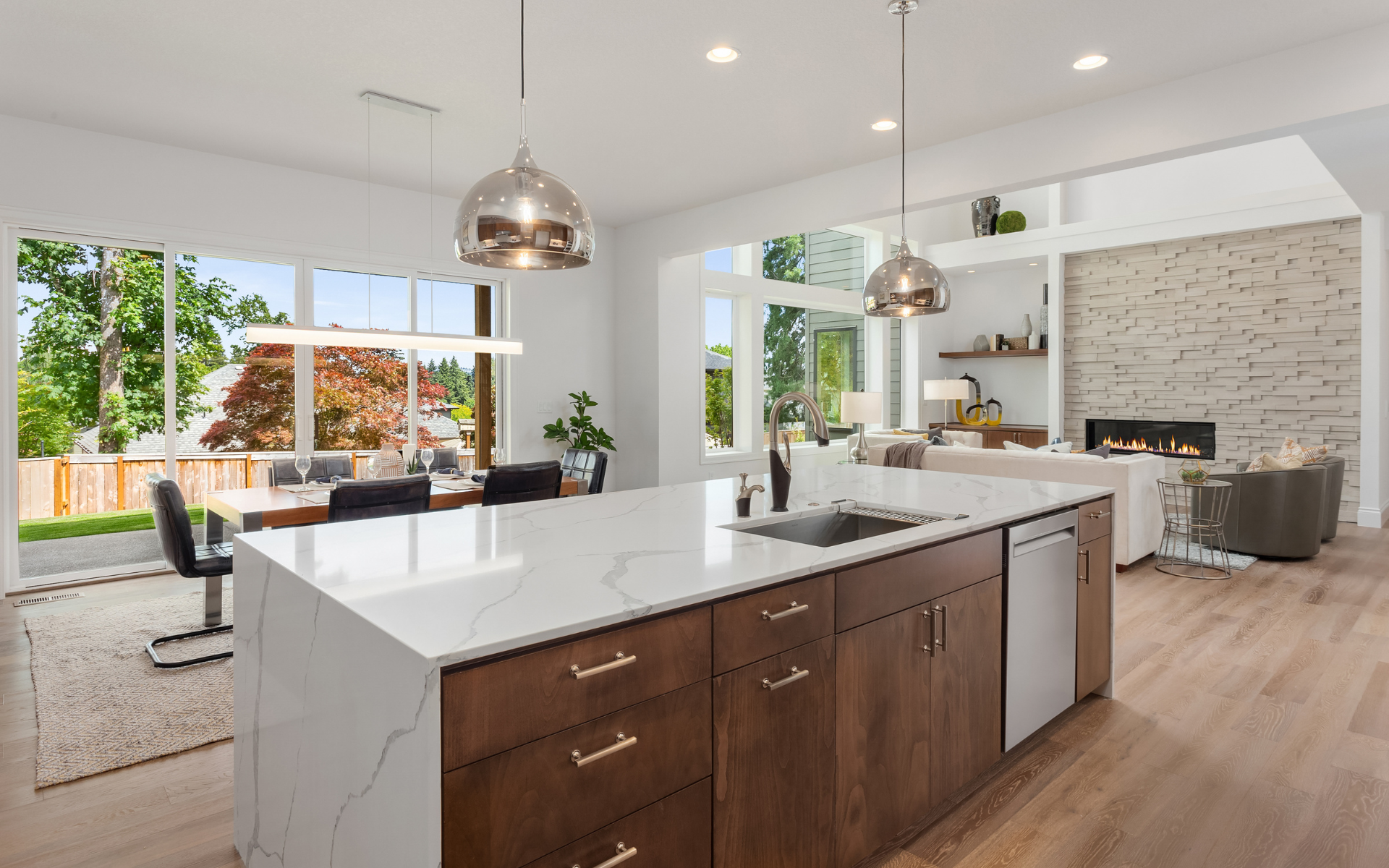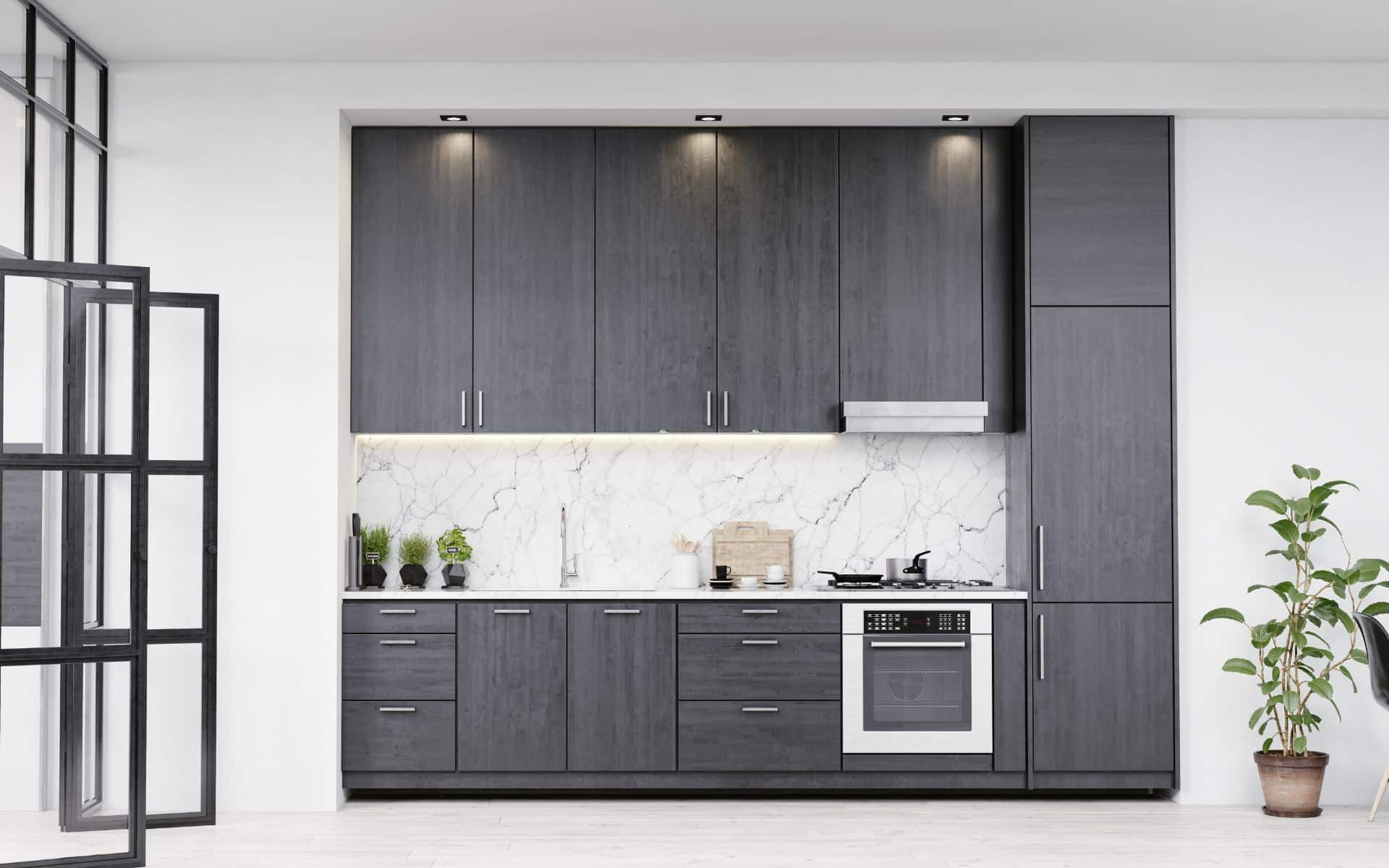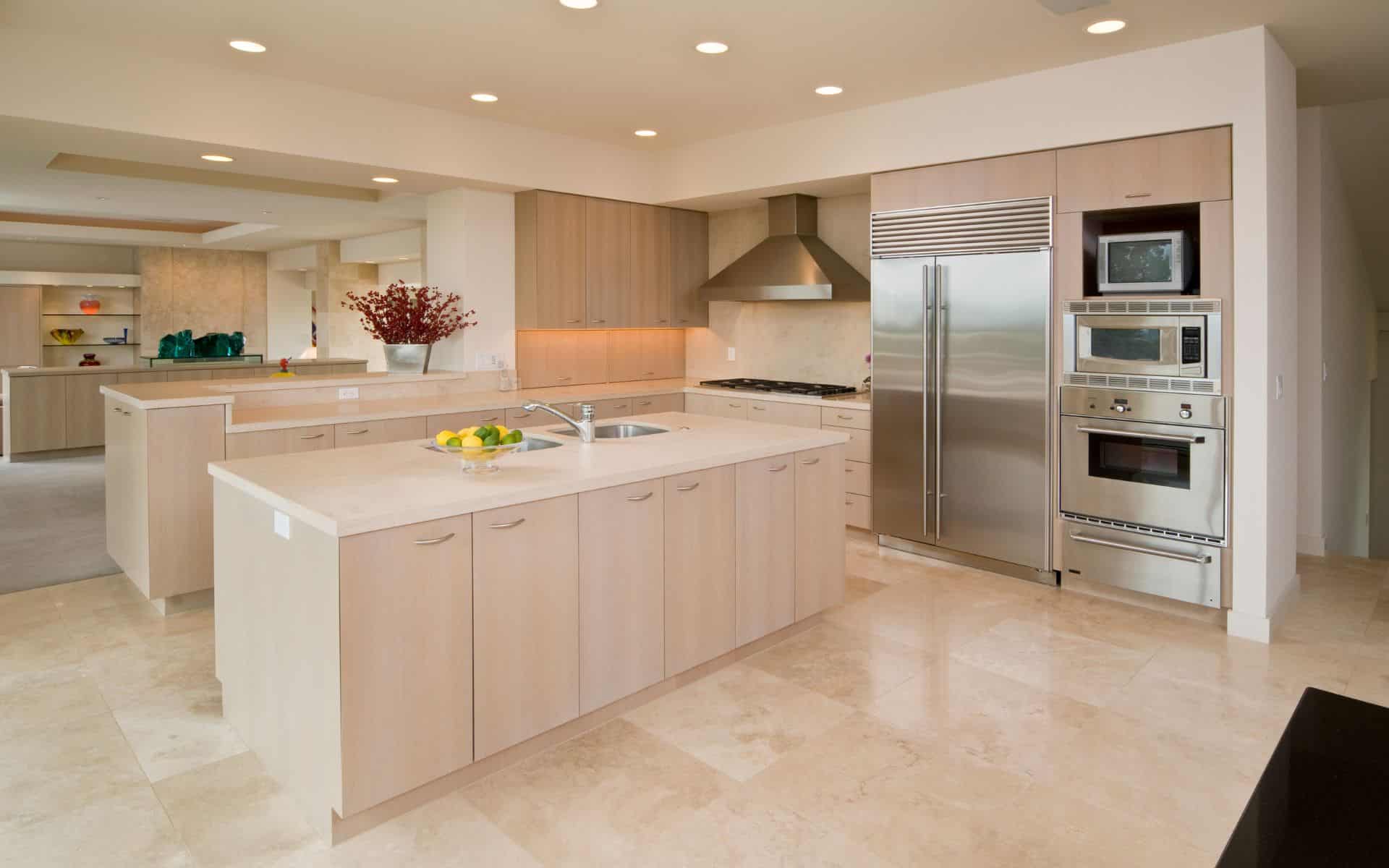If you’re in the market for new floors, hardwood is a timeless, versatile choice that brings natural warmth and elegance to the kitchen and bath. But there’s a lot to consider between solid hardwood, engineered wood, and more when installing hardwood flooring. This hardwood flooring 101 guide breaks down the key facts so you can make an informed decision for your home.
The Appeal of Wood Floors
Hardwood has remained the most popular flooring material for good reason. Natural wood grains and textures’ rich beauty and character create an inviting, lived-in style. Hardwood also suits any architectural style from traditional to contemporary. Unlike carpet or vinyl, hardwoods like oak, walnut, and exotic species bring vintage charm that doesn’t fade.
Types of Wood Flooring
Based on market evaluations from Floor Focus magazine, demand for hardwood flooring materials has continued gaining around 3-6% a year driven by home and business renovations and appreciation for wood floor beauty and value.
With so many flooring options on the market, it helps to understand the differences:
Solid Hardwood
As the name implies, solid hardwood floor planks are milled from a single piece of timber. This type generally lasts the longest – sanded and refinished repeatedly over decades. Durable North American hardwood species like oak, maple, cherry, and hickory are common.
Benefits
Offers the most natural wood look, highlighting the depth and character of real wood grains
Can be repeatedly sanded down and refinished over decades for a long life
Adds value for home resale
Variety of plank lengths/widths possible for the desired look
Considerations
Most expensive hardwood flooring option
More prone to contractions/expansions with humidity changes
Not suitable for some basements/crawlspaces
Engineered Hardwood
Engineered wood flooring fuses a real wood veneer top layer with multiple underlying wood ply layers. This layered “sandwich” construction makes engineered wood more stable and less prone to shrinking/expanding with humidity changes than solid wood. The veneer thickness varies.
Benefits
The real wood top layer shows attractive grain patterns
Sub-layers resist shrinking/swelling in humidity
Allows wider/longer plank formats like “slab” woods
Can install over radiant floor heating systems
An affordable option still using real wood
Considerations
A thinner veneer layer limits sanding/refinishing capacity
Look best with low-sheen matte finishes to mimic solid wood
Laminate Flooring
Laminate flooring has the look of hardwood created through a printed photographic applique layer. The material is a synthetic composite of resins and wood byproducts fused to a core backing. More affordable but less durable than natural wood.
Benefits
The most affordable simulated wood flooring option
Easy snap-fit floating floor installation works over existing floors
High durability wear layer resists scratches, dents, stains
Mimics stone, tile, and exotic wood visions
Considerations
Cannot refinish laminate flooring
Lacks depth and feel of natural solid woods
Not suitable for wet areas without membranes
Things to Consider When Choosing Hardwood Floors For Home Remodeling
From the type of construction to grain patterns, finish options, and board widths, several factors affect the project’s final look, performance, and cost.
Construction
Solid wood’s natural beauty comes at a price – it typically costs more than engineered wood or laminates. But solid woods can be refinished many times over generations. This is the reason why solid wood is most commonly used when it comes to home remodeling.
Engineered wood is still real wood on the surface but less expensive thanks to the core layers. Most engineered planks can’t be refinished more than once or twice though.
Laminates carry the lowest upfront cost and simulate wood visions well initially, but lack refinishing capacity and dent more easily.
Wood Species
Oak remains the most popular species thanks to its attractive grain, medium hardness, and warm hues. Variances in red oak vs white oak are mostly color-related.
Exotic woods like Brazilian cherry or African mahogany provide visually striking grains and richer color tones but usually cost more. They are also harder to source sustainably.
Domestic maple wood brings lighter coloring and small tight wood grains for an understated look. Soft woods like pine are affordable but show wear rapidly.
Plank Widths
Traditional 3”-5” plank widths lend historic character.
Wide-width planks of 7”-9” have a dramatic, stylish effect.
Variable-width planks create free-flowing natural patterns.
Long ‘slab wood’ planks minimize seams for a contemporary linear look.
Grain Patterns
Straight uniform grains keep the look understated
Grain variation with streaks or arches adds free-flowing visual interest
Distressed wood displays intentional cracks, worm holes, knots, or gloss-level differences
Specialty patterns like parquetry or herringbone patterns interlock small planks
Finish Options
Matte finishes minimize glare and hide wear effectively. Higher gloss finishes bring out the wood’s depth.
Stains introduce color tones from ebony to cherry without obscuring the grain.
Unfinished wood awaits your custom stain or gloss treatment. Site-finished is messier.
Unique hand scraping, smoking, or wire-brushing methods customize planks.
Moisture and Acclimation
It’s worth noting that freshly milled lumber continues releasing moisture gradually. Proper space acclimation before installation allows the wood to adjust to indoor humidity and temperature conditions and settle into stability. Storing planks on-site for 72+ hours is advised.
Site Considerations
Subfloor prep and site conditions must meet manufacturer specifications to avoid expansion issues. Any moisture issues below must be remediated before hardwood installation.
National Wood Flooring Association (NWFA) certified installers understand best practices for that region’s humidity range.
Expect to remove the existing base trim and transitional moldings to allow the new flooring to slip underneath.
Who Are the Major Hardwood Flooring Brands?
With so many players it helps to know the major brands across categories:
Solid Hardwood
Bruce
Shaw
Mohawk
Somerset
Hallmark Floors
Anderson Hardwood Floors
Engineered Hardwood
Shaw
Bruce
Armstrong Flooring
Anderson Hardwood Floors
Mirage Hardwood Floors
Kährs International
Laminate Brands
Pergo
Shaw Floors
Mohawk
Kronotex USA
Armstrong Flooring
QuickStep
Mannington
Reputable brands source ecologically and use sustainable manufacturing processes. Many offer warranties covering defects for 5 years to the life of the floor. Established furniture brands also tend to have better product availability for future repairs.
Costs To Install Hardwood Flooring
There’s significant variance in price across common types of hardwood flooring materials and styles. Generally, prices per square foot fall in these ranges:
Solid Hardwood Floors – $3-15 psf
Engineered Wood Floors – $3-13 psf
Laminate Floors – $1-5 psf
Of course, the wood species makes a major cost difference too. for example, Domestic oak, maple, or pine cost less than exotic woods. Factory-finished flooring is generally cheaper than site-finished custom work too. Herringbone patterns and inlay designs require specialized added labor as well.
Beyond materials, hardwood floor installation costs an average $3-5 per square foot to hire NWFA professionals. Rip-out of old floors, subfloor prep, base trim adjustments, etc further affect the final price. Be sure to incorporate those factors into creating your flooring budget!
Bottomline
Hardwood flooring immediately creates a warm, welcoming feel with timeless appeal. Thanks to great strides in product engineering, there are durable, stable flooring options that are suitable for any room nowadays. Doing your homework on the considerations above ensures your investment choice reflects your style. Consult reputable local flooring showrooms to view samples so you can see the woods, grains, and gloss options up close. Then enjoy personalized floors for a lifetime!

